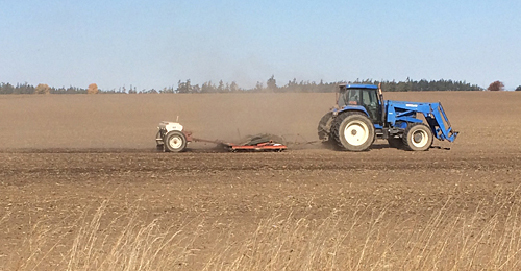This year’s grain crops are all harvested, but we found ourselves a little short on barley. We usually need about 100 tons of barley to feed the pigs and chickens next season, but this past season’s crop fell a little short. So Sam and Taylor headed back to our fields on Schmuck Road to plant more.
There are some advantages to planting grain in the fall, letting it overwinter, and harvesting it in June or July the following year. Most importantly, you don’t have to irrigate it. We couldn’t anyway because the irrigation was cut off on September 15, but autumn rains should be enough to get the grain to germinate and get started growing before deep cold sets in during the winter months and the grain goes dormant. It won’t really take off until the days get longer in the spring.
In North America, grain is often classified by when it is planted. For instance, spring wheat is sown in the spring and is harvested in the fall. Winter wheat is sown in the fall, goes dormant through the winter, comes back to life in the spring and is then harvested in early summer, and our barley will follow that pattern.
Below, the Delta crew is rushing to put the barley in the ground on Monday afternoon before the weather changes. When our shortfall becomes a problem in early summer, it should be ready to harvest.

